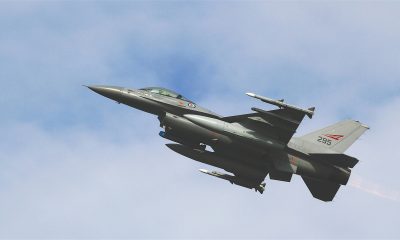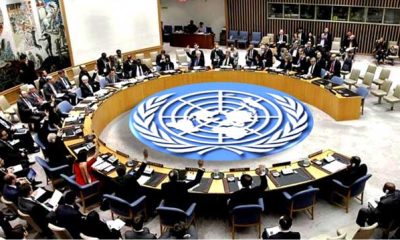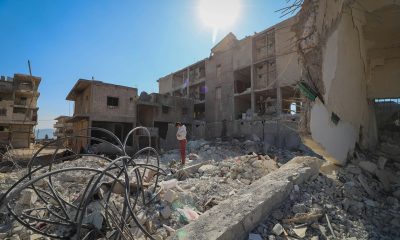Top Stories
Airstrikes on Iran: U.S. Targets Nuclear Sites, Kills Top IRGC Commander Saeed Izadi

Airstrikes on Iran Begin: What Happened?
In a seismic shift in Middle East geopolitics, the United States has launched airstrikes on Iran, targeting three of the country’s most significant nuclear facilities. President Donald Trump confirmed the strikes in a televised statement late June 22, 2025:
“All planes are safely on their way home. Fordow is gone.”
These airstrikes on Iran come amid growing tensions following Iran’s attacks on Israel and rising fears of nuclear escalation.
Key Targets Struck:
-
Fordow Fuel Enrichment Plant
-
Natanz Uranium Facility
-
Isfahan Uranium Conversion Center
The strikes were conducted by B-2 stealth bombers, equipped with GBU-57 bunker buster bombs, launched from U.S. bases in Guam and Diego Garcia.
☠️ Saeed Izadi Killed in Iran Airstrikes
One of the most consequential outcomes of the airstrikes on Iran is the confirmed death of Saeed Izadi, a top commander in Iran’s IRGC Quds Force.
Who Was Saeed Izadi?
-
Head of the Palestine Corps, the branch responsible for supporting Hamas, Hezbollah, and the Houthis.
-
Central in managing Iran’s proxy operations across the Middle East.
-
Sanctioned by the U.S. and U.K. for weapons smuggling and terrorist financing.
Izadi was killed in a separate Israeli airstrike in Qom within hours of the U.S. operation.
🧱 Why These Airstrikes on Iran Matter
H2: Fordow and Natanz – High-Value Nuclear Targets
The airstrikes on Iran were not symbolic—they struck deeply buried nuclear infrastructure that forms the backbone of Iran’s uranium enrichment program.
-
Fordow is built under a mountain, fortified by over 80 meters of rock.
-
The GBU-57 MOP (Massive Ordnance Penetrator) is one of the few weapons capable of damaging such a site.
This direct strike sends a message that diplomacy has stalled and the U.S. is willing to use force to stop Iran’s nuclear ambitions.
🔥 Iran’s Possible Response to U.S. Airstrikes
Experts warn that these airstrikes on Iran may unleash a wave of retaliation:
-
Missiles and drones targeting U.S. military bases in Iraq and the Gulf.
-
Hezbollah and Iraqi militias may attack U.S. and Israeli assets.
-
Cyberattacks could hit American infrastructure.
-
Iran may attempt to block the Strait of Hormuz, disrupting 20% of global oil traffic.
🌍 What the World Is Saying
Global reaction to the U.S. airstrikes on Iran has been swift:
-
The UN Security Council has called an emergency meeting.
-
Oil prices jumped above $107/barrel following news of the strikes.
-
NATO allies are urging restraint and preparing for further escalations.
“This could spiral quickly into a regional war if diplomacy doesn’t resume immediately,” warned a senior U.N. diplomat.
🕊️ Is There Any Room Left for Diplomacy?
While official diplomatic channels are now frozen, backchannels via European intermediaries are still rumored to be active. However, Iranian officials have said that “all negotiations are off” until the U.S. “pays for its crimes.”
👉 For official updates, visit the U.S. Department of Defense →
🔗 Related Article
👉 B-2 Bombers Deployment Explained: Prelude to Airstrikes on Iran
📌 Summary Table
| Detail | Info |
|---|---|
| Operation | U.S. airstrikes on Iran |
| Targets | Fordow, Natanz, Isfahan |
| IRGC Loss | Saeed Izadi killed |
| Risk Level | Extremely high |
| Global Response | Emergency UN meeting, oil surge |
| Diplomacy | Frozen, but under pressure |
📢 Final Word
The airstrikes on Iran mark a historic moment. For the first time in years, the U.S. has directly targeted Iran’s nuclear infrastructure. The death of Saeed Izadi and the destruction of key sites will likely provoke a response. Whether this evolves into a regional war—or leads to de-escalation—depends on what happens next.
Stay informed at defense.gov













